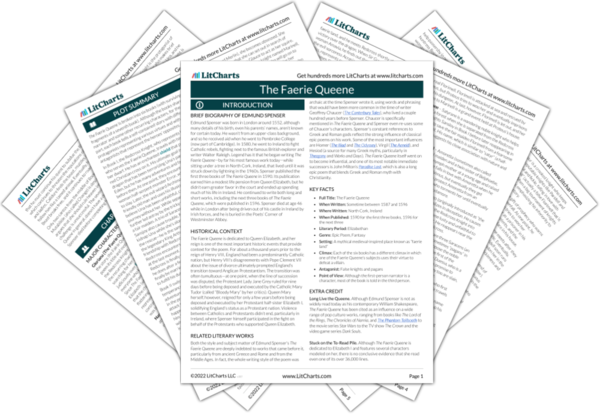The whole poem
The Faerie Queene is written in a style that was archaic for the time when Spenser was writing and which was inspired in part by
Canterbury Tales. One of the most noteworthy aspects of
Canterbury Tales is how it had self-contained stories that spanned different genres, something that
The Faerie Queene also does to an extent.
